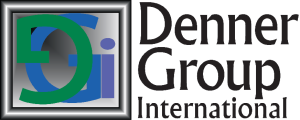Trends for Managing Change in 2015
By Eric Denniston, Managing Director, Denner Group International
Takeaways: Review of ten trends for managing change in a practical context. Think more clearly about the impact of the trends. Consider if any external help can improve your performance. Refocus on the speed of change and the need for greater agility in adapting to changes.
While conducting a quarterly scan on trends for the next two to three years I came across a brief SlideShare presentation by Dennis McCafferty in CIO Insight, titled Ten Execution Trends for 2015, which you can view by clicking here. The overriding theme in the trends he mentions is that while planning is always extremely important, flexibility and agility in executing your plans is becoming much more important in order to overcome the challenges of doing business. This piece focuses on the IT issues of organizations but the trends mentioned affect managing all aspects of all organizations. These are the trends:
- Real-time planning is mission-critical
- Leading indicators take on greater prominence
- Project management tackles enterprisewide tasks
- Cultural difference foster collaboration
- IT takes a seat at the “Influencers” table
- Agility dominates
- The “Organizational Surfer” rules the day
- Everyone’s a designer
- Value trumps all
- Just do it
We see greater importance given to future trends over research on past trends. We see the increasing need for a holistic approach to how projects and initiatives are planned and executed. We are reminded of the value of embracing cultural differences in fostering collaboration. IT now wields greater influence overall on the organization. The increased speed of change in general is driving us to delegate the execution of projects more thereby increasing agility, and as a by-product, provide Millennials with a more attractive work environment.
We also see a return to the concept of “roving staff”, which I experienced in banking in the ‘60’s and ‘70’s, now called “Organizational Surfers”. This was also common in large organizations with a group of employees who would “sub” for line staff, such as tellers, on vacation or sick leave, but are now found at all levels in the organization. There is also a notable increase in cross-functional collaboration and training in design thinking to extract great ideas from everyone possible in the firm regardless of whether those ideas pertain to their work or department.
Creating value for the customer is now job #1 over cost containment and problem solving. The final comment of the piece is titled “Just Do It!” It points out the danger in over-thinking things to the detriment of simply getting them done, thereby “staying ahead of change”.
Do your executives and team leaders have the skill sets to make the proper adjustments on the fly? Have you identified the leading indicators that will help you focus on future trends? Are your projects managed in a silo or are they directed with an enterprise-wide view? What initiatives are you implementing if there are multiple cultures in your business or you have an international presence?
At what level of your organization does your head of IT sit? For that matter, ask the same question about HR, Design, R&D, Safety and Security. Are your leaders capable of managing and even accelerating change with agility, and how are you including your younger staff members in the process? Are you creating a cadre of line staff, managers and executives that can support different functions either executing initiatives or performing training and coaching?
Is your organization capable of extracting creativity from folks other than those whose job is to design products and services? How are you gauging, measuring or tracking your leaders’ contribution to creating value for your customers and your stockholders?
Each of the 10 trends mentioned in the SlideShare piece broadly addresses issues that are clearly compelling to nearly every organization. Which one or ones compel you to make them a priority and how will you gather support in skill development and coaching to accelerate the effectiveness of implementing your initiatives?
I invite you 20****@de*********.com” target=”_blank”>contact me if you wish to explore how we might be able to assist you.
